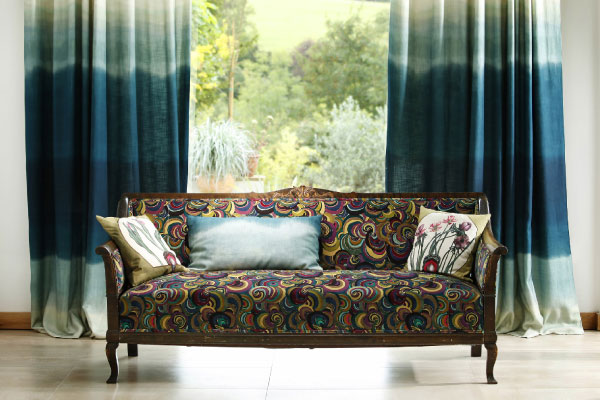Fabrics form an integral part of any interior design. Ankita Mamgain picks up the threads on what you should consider when choosing materials for your home.
Perhaps they’re not the first thing on your list when working on home interiors but fabrics play a crucial role in unifying the feel and tone of any space. Cloth is used everywhere in the home, from carpets to upholstery to bedding and even accessories such as towels, lampshades and cushions. A great way to make your home décor come to life is by choosing fabrics that add style and texture to the overall design.
Play with a variety of options to create the desired look – this could be a simple tablecloth on a large, impressive-looking dining table or it could be a throw draped across the couch. Fabricst can instantly provide a splash of colour or texture to the room. You can use them to pull together the look you’re going for or simply to accent it.
When it comes to fabric, there are many selections to choose from and it may be hard to figure out which one works best for your home. Not only should you consider the fabrics used in cushion covers and curtains but also those on bigger pieces such as furniture.
Upholstery
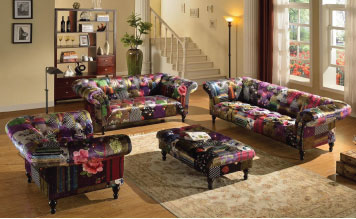 Some aspects of choosing the right fabric for your furniture can seem straightforward and fairly obvious. You immediately go for something you might find pretty, that’s comfortable to touch, is in line with your own aesthetic sensibility while complementing the overall design of the room or space and is easy to maintain.
Some aspects of choosing the right fabric for your furniture can seem straightforward and fairly obvious. You immediately go for something you might find pretty, that’s comfortable to touch, is in line with your own aesthetic sensibility while complementing the overall design of the room or space and is easy to maintain.
Here are some other factors you might want to consider while choosing the right upholstery.
Durability: Keep in mind who will be using your sofa or chair when making a decision on the fabric. If your pets will be sharing the furniture with you, consider a microfibre fabric or leather as these can withstand heavy use. Durability is also very important if the furniture is kept in a high-traffic area. Generally, woven patterns hold up longer than printed ones, as do higher thread counts and tight weaves.
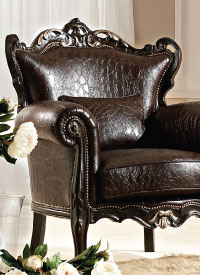 Whatever you choose it should approximate the style and character of the piece it is covering. Traditional fabrics look better on a traditional frame. That said, if you are one to experiment and know how to merge two very different styles, go for it.
Whatever you choose it should approximate the style and character of the piece it is covering. Traditional fabrics look better on a traditional frame. That said, if you are one to experiment and know how to merge two very different styles, go for it.
Colour: One of the most important reasons people go for fabric is the wide range of colours and patterns available. Although there is the option of changing it as frequently as you like, opt for something that you can live happily with for a while. If there are young children around, or pets, avoid light colours. Consider the colour temperature to create the right mood.
Additionally, take into account whether your fabric is fade resistant especially if it will be placed in a room that gets plenty of sunlight or close to a window. Bahrain can get really humid during the summer months, so you might also want to look for something that is mildew resistant.
Drapes and curtains
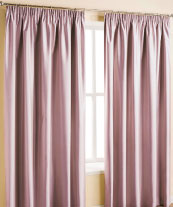 With such a wide array of ready-made drapery available, getting a fabulous window treatment is relatively easy and quick these days. However, this abundance can often make the choice a bit of a problem as well.
With such a wide array of ready-made drapery available, getting a fabulous window treatment is relatively easy and quick these days. However, this abundance can often make the choice a bit of a problem as well.
In terms of texture, consider the mood of the room. Opt for heavier silks or velvets for a formal space. Lighter fabrics like linen, silk and variations of these materials filter light beautifully and hang nicely, making them good choices for a sunny room. Blackout curtains in velvet, suede, tapestry and other heavy materials are excellent for blocking light and controlling room temperature.
More practical and often washable options include silky rayon blends and cotton sateen. Cotton and cotton blends work with any type of decor and bring a crisp, neat feel to any space.
Moving on to colour, neutral curtain colours blend easily and are less likely to fade. But don’t be afraid to go with a pop of pattern or stripes to add some visual excitement to a room.
Linen and Accessories
No matter how much we try to make our rooms look like hotel suites and interiors magazine pictures, the reality invariably comes down to mismatched and tired looking bedsheets, pillow covers, tablecloths, runners and napkins. However, if carefully chosen, you can keep their newness and your enthusiasm for a great-looking room going for a long time.
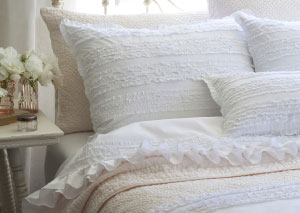 Invest in pieces with a good thread count, you do not want something that thins outs in two washes or pills up. Higher thread count indicates softer and more comfortable linen. Wrinkle resistance makes sure that your bed linen looks great all the time. Good finishing on the sheets will prevent skin scar or scratches. Softer finishing usually comes at a more expensive price and needs more care when it comes to washing and cleaning, but feels really good on the skin.
Invest in pieces with a good thread count, you do not want something that thins outs in two washes or pills up. Higher thread count indicates softer and more comfortable linen. Wrinkle resistance makes sure that your bed linen looks great all the time. Good finishing on the sheets will prevent skin scar or scratches. Softer finishing usually comes at a more expensive price and needs more care when it comes to washing and cleaning, but feels really good on the skin.
Materials for everyday use should be easy to clean and maintain. Choose fabrics that can breathe easily like cotton, silk and their blends especially for beds. Keep a good selection of moderately priced linen for daily use and some luxurious pieces to be used sparingly. For tables, a really good way to spruce up a plain cover is to throw a bright runner over the top.

























